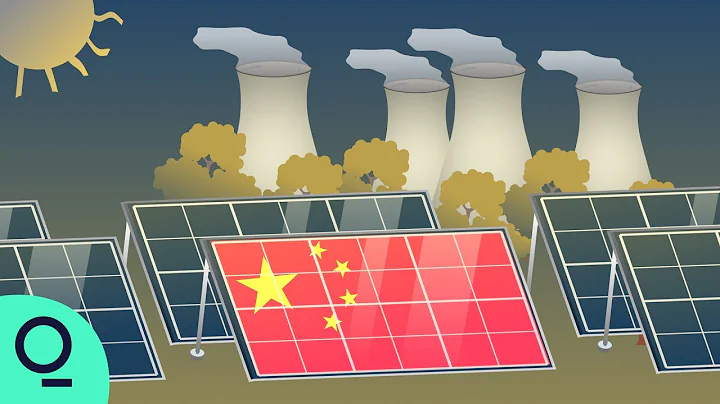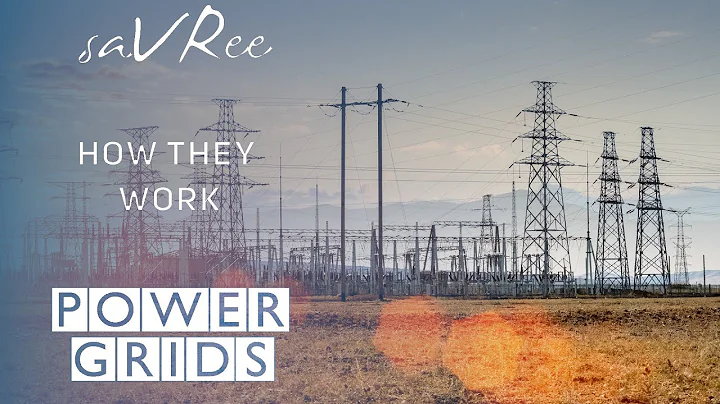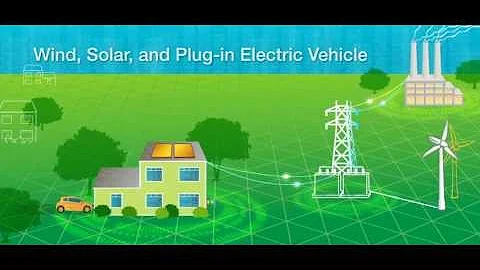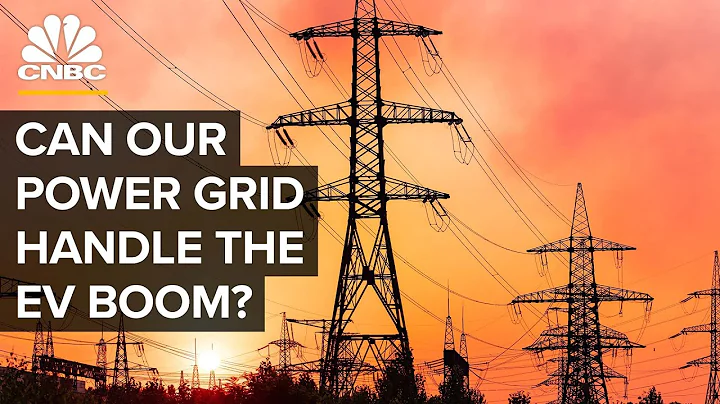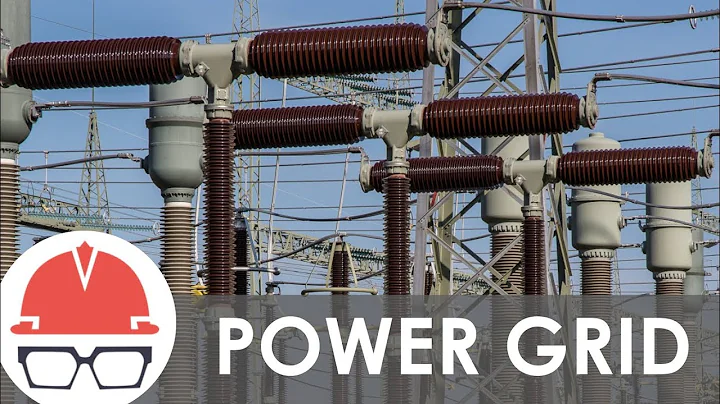[Energy people are watching, click on the upper right corner and add 'Follow']
Polaris Sales Network News: Polaris Sales Network learned that the Ningxia Development and Reform Commission recently issued a notice on matters related to Ningxia Power Grid's transmission, distribution and sales prices in 2021-2022, saying that further Optimize the sales price structure, effectively transmit the reform dividends to end users, and effectively reduce users’ electricity costs. At the same time, unreasonable price preferential policies will be cancelled, and electricity sales prices will be made more fair and reasonable. Reduce the price of "electricity for industrial, commercial and other uses". Combined with the reduction in power transmission and distribution prices, the end-user single-system and two-part catalog sales electricity prices will be adjusted in accordance with the principle of “all reductions should be made”.
Compared with the electricity price list in the "Notice of the Autonomous Region Development and Reform Commission on Adjustments to the Classification Structure of Sales Electricity Prices in Our Region" issued by the Ningxia Development and Reform Commission on May 14, 2019 (see the end of the article for details), the changes are as follows:
Electricity transmission and distribution price: Single Electricity consumption in the industrial, commercial and other systems was reduced by 0.0437 yuan/kWh. In the two-part system, the electricity consumption in 1-10 kV was reduced by 0.0261 yuan/kWh, 35 kV was reduced by 0.0111 yuan/kWh, and 110 kV was reduced by 0.0061 yuan/kWh. In kilowatt hours, 220 kV decreased by 0.0011 yuan/kWh, and 330 kV increased by 0.0059 yuan/kWh.
Sales electricity price: Single system industrial, commercial and other electricity consumption will be reduced by 0.0637 yuan/kWh, two-part system industrial, commercial and other electricity consumption of 1-10 kV will be reduced by 0.0461 yuan/kWh, and 35-110 kV and below will be reduced by 0.0311 yuan/kWh. , 110 kV is reduced by 0.0261 yuan/kWh, 220 kV is reduced by 0.0211 yuan/kWh, 330 kV and above is reduced by 0.0141 yuan/kWh.
In addition, the Ningxia Development and Reform Commission also issued a notice on adjusting the applicable scope of Ningxia power grid sales electricity price classifications. While steadily advancing the adjustment of the applicable scope of various sales electricity prices, it will strictly follow the relevant requirements of the national electricity price reform, accelerate the merging of electricity categories, and simplify electricity prices. Classification, details are as follows:
Notice of the Autonomous Region Development and Reform Commission on Matters Related to Ningxia Power Grid’s Transmission, Distribution and Sales Prices in 2021-2022
Ningfa Reform Price (Management) [2020] No. 780
Development and Reform Commissions of various cities and counties (districts), State Grid Ningxia Electric Power Co., Ltd.:
According to the "Notice of the National Development and Reform Commission on Approving Provincial Power Grid Transmission and Distribution Prices from 2020 to 2022" (Fagai Price Regulations [2020] No. 1508), in accordance with the National Development and Reform Commission's "On Doing a Good Job "Notice on Matters Relevant to the Development of Sales Electricity Price in the Second Supervision Cycle" requires that the relevant matters concerning the transmission, distribution and sales price of Ningxia Power Grid in 2021-2022 are hereby notified as follows:
1. Transmission and distribution price
Ningxia Power Grid 2021- approved by the National Development and Reform Commission Please see Appendix 1 for details of power transmission and distribution prices by voltage level in 2022 (including value-added tax, line loss and cross subsidies).
2. Sales electricity price
Further optimize the sales electricity price structure, effectively transmit the reform dividends to end users, and effectively reduce users’ electricity costs. At the same time, unreasonable price preferential policies will be cancelled, and electricity sales prices will be made more fair and reasonable.
1. Reduce the price of "industrial, commercial and other electricity". Combined with the reduction in power transmission and distribution prices, the end-user single-system and two-part catalog sales electricity prices will be adjusted in accordance with the principle of “all reductions should be made”.
2. Simplify and merge agricultural production electricity price categories. In accordance with the national requirements for simplified electricity price classification, agricultural electricity prices are simplified and merged: irrigation and drainage electricity used for crop cultivation and planting, forest cultivation and planting (limited to returning farmland to forest, and desertification prevention and control) are subject to unified agricultural drainage and irrigation electricity prices; The above-mentioned electricity consumption range for irrigation and drainage is the electricity consumption for multi-stage water pumping (with a head of 50 meters and above), and the multi-stage water pumping electricity price is unified. The electricity price category for deep well irrigation in rural areas will be cancelled. After the cancellation, electricity price standards for agricultural production, agricultural drainage and irrigation, and multi-level water pumping will be implemented according to the nature of electricity consumption. Among them, agricultural drainage and irrigation electricity prices for drinking water for people and animals in rural areas will be implemented. Each type of electricity consumption must be installed with separate measuring devices. If the conditions for metering and meter installation are not available on site, fixed ratio or quantitative methods shall be adopted and calculated separately.
The transmission and distribution prices for participating in direct transactions between power users and power generation companies shall be implemented in accordance with the 2021-2022 Ningxia Power Grid transmission and distribution price standards, and additional government funds and surcharges will be levied in accordance with regulations. Other users will continue to implement the catalog sales price policy. The direct transaction price is based on the peak and valley time-of-use electricity price (excluding spot and on-grid side peak and valley time-of-use electricity prices).Please see Annex 2 and Annex 3 for details of the adjusted electricity sales price standards for various types of users.
3. Relevant requirements
Power grid enterprises must carefully organize and make careful arrangements to ensure the smooth implementation of this price adjustment policy. At the same time, we will strengthen policy publicity, proactively serve users, and accurately interpret policies.
4. Execution Time
This notice will be implemented from January 1, 2021.
Ningxia Hui Autonomous Region Development and Reform Commission
November 27, 2020
(This document is publicly released)



Notice of the Autonomous Region Development and Reform Commission on Adjusting the Scope of Application of Ningxia Power Grid Sales Price Classification
Ningfa Reform Price (Management) [2020] No. 781
The development and reform commissions of various cities and counties (districts) and State Grid Ningxia Electric Power Co., Ltd.:
In order to improve and improve the power grid sales price system in our region, promote fair burdens on power users, and rationally allocate power resources, in accordance with the "National Development and Reform Commission's Notice on Adjusting Sales Prices According to the requirements of "Notice on Issues Related to Classification Structure" (Fagai Price (2013) No. 973), combined with the adjustment requirements of national electricity price policies in recent years, our committee has revised the "Instructions on the Scope of Application of Ningxia Power Grid Sales Electricity Price Classification" and now notifies the relevant matters As follows:
1. Standardize the applicable scope of various sales electricity prices
The applicable scope of sales electricity prices is mainly used for residential electricity, agricultural production, industry and commerce and other electricity price categories. The above scope of application does not change the original electricity consumption characteristics of users.
2. Ensure the seriousness and operability of policy implementation
Combined with the current sales electricity price policy of the country and our region, and by unifying and clarifying the applicable scope of classification, we ensure that the policy is scientific, rigorous and easy to implement.
3. Promote the adjustment of the classification structure of sales electricity prices in our district
While steadily advancing the adjustment of the applicable scope of various types of sales electricity prices, we will strictly follow the relevant requirements of the national electricity price reform, accelerate the merging of electricity categories, simplify the classification of electricity prices, and have a positive impact on social and economic development. New situations arise in the process of using electricity, and we will continue to accumulate practical experience and supplement and improve relevant price policies in a timely manner.
This notice will be implemented from January 1, 2021. The "Notice of the Autonomous Region Price Bureau on Issuing the Description of the Scope of Application of Ningxia Power Grid Sales Price Classification" (Ningping Shangfa [2016] No. 6) was abolished at the same time.
Ningxia Hui Autonomous Region Development and Reform Commission
November 28, 2020
(This document is publicly released)
Attachment
Scope of application of Ningxia power grid sales electricity price classification
1. Residential electricity consumption
Residential electricity consumption refers to urban and rural residents' household residences, urban and rural areas Public ancillary facilities in residential areas, school teaching and student life, life in social welfare places, life in religious places, service facilities of urban and rural community residents' committees and rural village committees, life in prison cells, township governments and health centers, and residential heating electricity. The scope of application is as follows:
(1) Electricity consumption in urban and rural residential buildings: refers to the domestic electricity consumption in residential buildings of urban and rural residents, as well as in collective dormitories of government agencies, military units, schools, enterprises and institutions. Electricity used for production and business activities using residents', employee's residences, and collective dormitories to open clubs, shops, restaurants, beauty salons, Internet cafes, etc. does not belong to residents' daily life.
(2) Electricity consumption for public ancillary facilities in urban and rural residential areas: refers to non-public lighting, elevators, electronic security doors, electronic doorbells, fire protection, green spaces, doormen, garages, secondary water supply facilities, etc. in urban and rural residential areas. Business use of electricity. It does not include property management offices, business premises, toll-operated parking garages, municipally managed community street lights, and communication operators and other power facilities located in the community for production and business activities.
(3) Electricity consumption for school teaching and student life: refers to the electricity consumption of school classrooms, libraries, laboratories, sports rooms, school administrative rooms and other teaching facilities, as well as the electricity consumption of student living facilities such as student cafeterias, bathhouses and dormitories. .
Schools that implement residential electricity prices refer to public and private schools approved by relevant national departments and organized by the government and its relevant departments, social organizations and individual citizens, including: (1) Ordinary colleges and universities (including universities, independent institutions colleges and technical schools); (2) ordinary high schools, adult high schools and secondary vocational schools (including ordinary technical secondary schools, adult technical secondary schools, vocational high schools, and technical schools); (3) ordinary junior high schools, vocational junior high schools, and adult junior high schools; ( 4) Ordinary primary schools and adult primary schools; (5) Kindergartens (nursery schools); (6) Special education schools (institutions that implement compulsory education for children and teenagers with disabilities). It does not include various types of commercial training institutions, such as driving schools, cooking, beauty salons, language, computer training, etc., as well as training institutions of government agencies, enterprises and institutions, schools that concurrently operate commercial training, and school-run enterprises that mainly involve non-students participating in labor internships. and other production and operation electricity.
(4) Domestic electricity use in social welfare places: refers to those approved by the civil affairs department of the people's government at the county level and above and organized by the state, social organizations and individual citizens to provide care and rehabilitation for the elderly, disabled people, orphans and abandoned infants Domestic electricity consumption in , hosting and other service places.
(5) Domestic electricity consumption in religious sites: refers to the domestic electricity consumption of permanent residents and temporary residents of religious activity sites such as temples, temples, mosques, churches, etc. registered with the religious affairs department of the people's government at the county level and above. It does not include electricity used in places where religious activities are held, as well as commercial places for tourists to visit, shop, cater, and stay.
(6) Electricity consumption for service facilities of urban and rural community residents’ committees and rural villagers’ committees: refers to the electricity consumption in the workplaces and non-operated public welfare service facilities of urban and rural community residents’ committees and rural villagers’ committees. Including: electricity for the offices of urban and rural community residents’ committees and rural villagers’ committees; electricity for affiliated non-public welfare reading rooms, police offices, medical offices, fitness rooms, etc.; affiliated welfare homes, nursing homes and facilities for the elderly. Electricity consumption in elderly care facilities for boarding and accommodation services; daily electricity consumption in affiliated nurseries and kindergartens. Excludes street office electricity consumption.
(7) Daily electricity consumption in prison cells: refers to the electricity consumption in prison units’ dormitories, cells, canteens, bathhouses and other living facilities.
(8) Electricity consumption by township governments and health centers.
(9) Residential heating electricity: electric boilers, heat pumps and other electric auxiliary heating equipment are used to provide heating services to residents (excluding commercial users). In rural areas, "coal to electricity" is used for centralized heating and electricity supply.
Residential electricity prices for urban and rural residents above the range are subject to residential electricity prices, and other residential electricity prices are subject to combined meter user electricity prices.
2. Electricity used in agricultural production
Electricity used in agricultural production refers to the electricity used in crop planting, tree cultivation and planting, animal husbandry and fishery, agricultural drainage and irrigation, primary processing and storage of agricultural products, primary straw processing and fresh-keeping storage facilities, excluding other agricultural products. , forestry, animal husbandry and fishery service industries use electricity. Electricity used in agricultural production is mainly divided into three subcategories according to price: agricultural production electricity price, agricultural drainage and irrigation electricity price, and multi-level water pumping electricity price. The scope of application is as follows:
(1) Price of electricity for agricultural production
1. Electricity for crop cultivation: including cereals, beans, potatoes, cotton, oil plants, sugar, hemp, tobacco, vegetables, edible fungi, horticultural crops, fruits, nuts, oil-containing fruits, beverages and spice crops, Chinese medicinal materials and others Electricity is used to grow crops.
2. Electricity used for tree cultivation and planting: refers to electricity used for tree breeding and seedlings, afforestation and regeneration, forest management and management, horticulture industrial parks (except for office lighting), non-commercial landscape forest maintenance, municipal greening and other activities. Among them, electricity consumption for forest management and management refers to the electricity consumption for activities that promote the growth and development of forest trees at different stages of forest growth.
3. Livestock electricity consumption: refers to the electricity consumption for animal raising activities in order to obtain various livestock and poultry products. It does not include electricity used specifically for livestock raising related to sports activities and leisure activities.
4. Fishery electricity consumption: refers to the electricity used for breeding and fishing of various aquatic animals in inland waters, and for breeding and fishing of various aquatic animals and plants in seawater. It does not include electricity specifically used for sports activities, recreational fishing and other activities, as well as electricity used for processing aquatic products.
5. Electricity used for primary processing of agricultural products: refers to the dehydration, coagulation, seed removal, purification, classification, sun-drying, peeling, preliminary roasting, retting, or bulk packaging of various agricultural products (including natural rubber and textile fiber raw materials) to provide primary markets. of electricity consumption.
6. Electricity for storage of agricultural products: refers to cereals, beans, potatoes, cotton, oil plants, sugar, hemp, tobacco, vegetables, edible fungi, horticultural crops, fruits, nuts, oil-containing fruits, beverages and spice crops, Chinese medicinal materials and Electricity is used for storage of other crops (before the initial trading phase).
7. Electricity consumption for primary processing of straw: electricity consumption by individuals or units for picking, bundling, cutting, crushing, briquetting and other working procedures of straw, but does not include electricity consumption for subsequent deep processing production procedures.
8. Electricity consumption for fresh-keeping storage facilities: electricity consumption for fresh-keeping storage facilities built in rural areas by family farms, farmer cooperatives, supply and marketing cooperatives, postal express companies, leading industrial enterprises, and agricultural product circulation companies. "Rural areas" refers to areas outside cities and towns that are divided into areas under the jurisdiction of village committees confirmed by the civil affairs department. You can refer to the "Rules for the Compilation of Administrative Division Codes below the County Level Used in Statistics" (Guotong Zi [2000] No. 64). The third segment of the administrative division code (digits 10-12, indicating administrative villages) is in "200-399" The villages within the scope are defined as rural areas. "Fresh-keeping storage facilities" refer to the constant-temperature warehouses and cold storages with temperature control such as refrigeration, freezing, and insulation that are built for the above-mentioned enterprises in rural areas. At the same time, they directly report to the power grid enterprises for installation and use of electricity, during or before the initial processing and production of products. Implement electricity prices for agricultural production.
(2) Agricultural drainage, irrigation and multi-level water pumping electricity prices
The agricultural drainage, irrigation and electricity prices for irrigation and waterlogging used for crop planting, forest cultivation and planting (limited to returning farmland to forests, desertification prevention and control) are subject to unified agricultural drainage and irrigation electricity prices; the above-mentioned irrigation and waterlogging The electricity consumption range is for multi-stage water pumping (with a head of 50 meters and above), and the multi-stage water pumping electricity price is unified.
In rural areas, agricultural drainage and irrigation electricity prices are applied to the electricity used for drinking water by humans and animals.
3. Industrial, commercial and other electricity consumption
Industrial, commercial and other electricity consumption refers to electricity consumption other than electricity for residential life and agricultural production. According to the electricity price execution method, it is divided into two-part electricity price and single-part electricity price. The scope of application is as follows:
(1) Two-part
power receiving transformer (including high-voltage motor that does not pass the power receiving transformer) with a capacity of 315 kVA and above for the following electricity consumption.
1. Electricity is used for industrial production using electricity as the driving force, or for electric smelting, baking, welding, electrolysis, electrochemistry, and electric heating.
2. Electricity is used for production in railways (including underground railways and urban railways), shipping, trams, and petroleum (natural gas, thermal) pressurizing stations.
3. Production electricity is used for tap water, industrial experiments, electronic computing centers, garbage treatment, sewage treatment, etc.
4. Electricity consumption in the agricultural and sideline food processing industry: refers to grain grinding, feed processing, vegetable oil and sugar processing, slaughtering and meat processing, aquatic product processing, and vegetable, The processing of fruits, nuts and other foods uses electricity.
(2) Single system
Electricity consumption other than the two-part electricity price for residential electricity, agricultural production, industry and commerce and other electricity, of which the capacity of the power-receiving transformer (including high-voltage motors that do not pass the power-receiving transformer) is 315 Those with electricity consumption of kilovolt amperes and above can voluntarily choose to implement a two-part system or a single system price for industrial, commercial and other electricity consumption based on their own electricity consumption characteristics.
4. Others
(1) Electric vehicle charging and swapping facilities: For the power used by commercial centralized charging and swapping facilities that directly report to the power grid operating enterprise for installation and connection, the industrial, commercial and other two-part electricity prices shall be implemented. Before 2025, basic electricity bills will be temporarily waived. Other charging facilities implement classified catalog electricity prices according to their location. Among them, the electricity used by charging facilities installed in residential homes, residential communities, and non-resident users that implement residential electricity prices, and the electricity prices for combined users that implement residential electricity prices (except for commercial charging facilities); party and government agencies, enterprises Charging facilities installed in public institutions and social public parking lots are subject to industrial, commercial and other single electricity prices.
(2) Electricity consumption in some environmental protection industries: Before the end of 2025, demand (capacity) electricity charges will be waived for electricity used by sewage treatment companies, port shore power operators, and seawater desalination that implement the two-part electricity price system.
(3) When power generation enterprises start the commissioning stage or stop operation due to their own reasons to purchase electricity from the power grid, they shall implement the two-part electricity price standard for industrial, commercial and other electricity consumption in the catalog electricity price list, and no basic electricity fee will be charged. When the distributed power supply starts the debugging stage or stops operation due to its own reasons and purchases electricity from the power grid, it will be executed according to the electricity price corresponding to the user's main industry.
Attached is the May 14, 2019 version of the sales electricity price, transmission and distribution price, and peak and valley time-of-use electricity price table



Disclaimer: The above content is reproduced from Polaris Power News Network, and the content published does not represent the position of this platform.
National Energy Information Platform contact number: 010-65367702, email: [email protected], address: People's Daily, No. 2 Jintai West Road, Chaoyang District, Beijing


